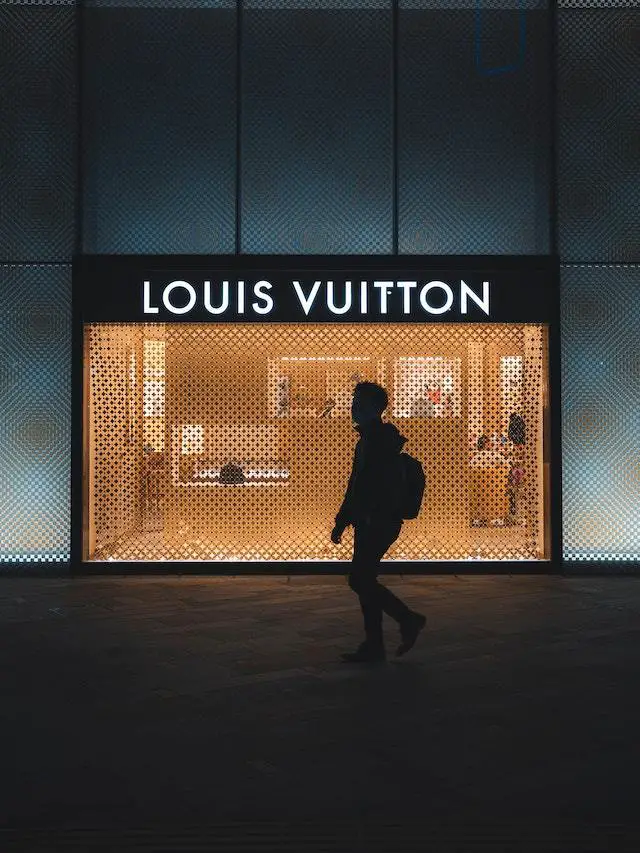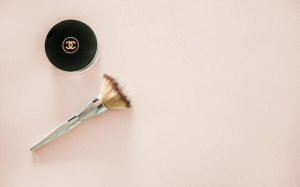Few fashion labels can compare to the renown of Louis Vuitton and Burberry in the world of luxury apparel. In this in-depth Luis Vuitton vs. Burberry case study, we will delve into the strategies that have shaped these two iconic brands’ global presence.
The French company Louis Vuitton has long been synonymous with opulence, thanks to its focus on product quality and craftsmanship. Meanwhile, Thomas Burberry’s eponymous British brand is celebrated for its sustainability initiatives and digital marketing prowess.
In our analysis of both companies’ international expansion tactics, we’ll explore how they’ve navigated financial turbulence while maintaining relevance among increasingly discerning consumers. The role of Chinese shoppers in luxury fashion cannot be understated; hence we’ll also examine China’s influence on global sales trends within this sector.
Finally, we’ll take a closer look at market performance indicators such as share price surges and acquisition speculation for both brands. Join us as we uncover the fascinating intricacies behind these two powerhouse names in our Luis Vuitton vs. Burberry case study.
Table of Contents:
- Louis Vuitton’s International Expansion Strategy
- Burberry’s Global Growth Approach: Sustainable Lifestyle and Digital Savvy
- Financial Turbulence Impacting Luxury Brands
- Contrasting Approaches Towards International Expansion
- Market Performance Indicators for Luxury Fashion Houses
- The Role of Chinese Shoppers in Luxury Fashion
- What was the downfall of Burberry?
- What are the key success factors of Burberry?
- What problems did Burberry face?
- Why is Louis Vuitton better than others?
- Conclusion
Louis Vuitton’s International Expansion Strategy
Let’s delve into the realm of luxurious fashion, shall we?
Enter Louis Vuitton, a brand that has become synonymous with high-end handbags and leather accessories.
Their international expansion strategy is all about maintaining impeccable quality standards while targeting affluent Chinese shoppers.
Focus on Product Quality and Craftsmanship
Louis Vuitton knows what they’re doing when it comes to their products. They’ve built an empire by focusing on exceptional craftsmanship and attention to detail in every piece they create. This commitment to excellence sets them apart from other brands in the luxury fashion industry.
Targeting Affluent Chinese Shoppers
Louis Vuitton’s global success hinges on their ability to appeal to the affluent Chinese market, who have an insatiable appetite for luxury items. Chinese shoppers are driving demand for high-end products, which means Louis Vuitton needs to be at the forefront of their minds if they want to continue dominating this space.
Burberry’s Global Growth Approach: Sustainable Lifestyle and Digital Savvy
Let’s talk about Burberry, the iconic British luxury brand that blends heritage with innovation to achieve global growth.
So, what is the secret to Burberry’s success?
You might be wondering, “How well is this working for Burberry?” Well, a recent report showed that the company experienced a whopping 33% increase in fourth-quarter sales due to strong demand from Chinese shoppers and tourists. Additionally, potential acquisitions have been speculated, which could further strengthen Burberry’s position in the fashion industry.
Burberry is reaping the rewards of their sustainable and tech-oriented strategy, making it thrilling to watch them revolutionize luxury fashion.
Are you curious about how Louis Vuitton tackles international expansion? Keep an eye on these two luxury giants as they pave the way for the fashion industry.
Financial Turbulence Impacting Luxury Brands
As a modern-day blog editor experienced with SEO, I know that luxury fashion houses like Louis Vuitton and Burberry are no strangers to challenges amidst uncertain global economic conditions.
During financial turbulence or recession, consumer behavior towards purchasing luxury items shifts, even for the super wealthy who might think twice before splurging on high-end products despite their ability to afford it. In order to sustain their place in the market, luxury brands must adjust their tactics when faced with economic hardship.
Resilience against Financial Instability Concerns
Adapting strategies during economic downturns becomes crucial as these brands must find ways to stay relevant and appealing without compromising quality or exclusivity. Diversifying product offerings, exploring new markets, and leveraging digital channels can help them navigate through stormy economic waters.
Adapting Strategies During Economic Downturns
Innovation is key as luxury brands must find ways to stay relevant and appealing without compromising quality or exclusivity. Diversifying product offerings, exploring new markets, and leveraging digital channels can help them navigate through stormy economic waters.
Embracing Sustainability Initiatives by Burberry’s Founder Thomas Burberry
Burberry, founded by Thomas Burberry, has been focusing on sustainability initiatives as part of its strategy. Younger generations are particularly drawn to the company’s sustainability efforts, making it a key factor in retaining and gaining customers.
Louis Vuitton’s French Company Emphasizes on Quality and Craftsmanship
Louis Vuitton, the iconic French company, remains committed to its core values of quality and craftsmanship. This dedication ensures that their products continue to be highly sought after by affluent consumers worldwide, even during economic downturns.
In conclusion, both Louis Vuitton and Burberry have proven their ability to withstand financial turbulence through strategic adaptations while staying true to their brand identities. Their contrasting approaches towards international expansion within the luxury fashion industry showcase how they navigate changing global economic climates impacting consumer spending habits.
Luxury fashion houses like Louis Vuitton and Burberry have faced challenges during financial turbulence or recession, leading to a shift in consumer behavior towards purchasing luxury items. To maintain a strong presence in the market, these brands must adapt their strategies by diversifying product offerings, exploring new markets, leveraging digital channels and embracing sustainability initiatives without compromising quality or exclusivity.
Contrasting Approaches Towards International Expansion
Let’s dive into the world of luxury fashion and explore how Louis Vuitton and Burberry tackle international expansion.
These iconic brands have contrasting approaches, but both are driven by their unique brand identities and focus on specific product categories.
Differentiating Factors Between Both Brands’ Expansion Tactics
Louis Vuitton, a French company, is known for its meticulous craftsmanship in leather goods and handbags.
Their strategy emphasizes maintaining impeccable quality standards while expanding globally, especially targeting affluent Chinese shoppers who crave high-end products.
Burberry, founded by Thomas Burberry, has a different approach to global growth that focuses on sustainability initiatives and leveraging digital marketing channels.
This British luxury brand aims to lead a sustainable lifestyle through innovative campaigns like their recent collaboration with Marcus Rashford to support disadvantaged youth in the UK.
Maintaining Relevance Among Increasingly Discerning Consumers
In the ever-evolving fashion world, Louis Vuitton and Burberry must stay pertinent to today’s discerning customers all around the globe.
To achieve this goal, they must adapt their strategies according to changing global economic climates that impact consumer spending habits.
Want to learn more about these luxury giants? Check out our comprehensive analysis right here.
As we’ve seen, Louis Vuitton and Burberry have contrasting approaches to international expansion, but both are driven by their unique brand identities and focus on specific product categories. Their success lies in adapting their strategies amidst changing global economic climates that impact consumer spending habits.
Market Performance Indicators for Luxury Fashion Houses
Let’s talk numbers, shall we?
Burberry shares have been on a roll, outperforming the STOXX Europe 600 personal & household goods index. They are trading at an impressive 20 times forecast earnings for 2011-12.
But wait, there’s more.
Now, let’s shift our focus to LVMH, Louis Vuitton’s parent company.
Burberry’s Share Price Surge and Potential Acquisition Speculation
You must be wondering what all this buzz around Burberry is about?
- Demand from Chinese customers and tourists skyrocketed,
- A whopping 33% increase in fourth-quarter sales was reported,
- Potential acquisitions are rumored (though unconfirmed).
LVMH’s Investment Capabilities Amidst Economic Uncertainty
Despite exposure risks, LVMH has the scope to invest in keeping their brands relevant and desirable. Louis Vuitton stands as a shining exemplar of how LVMH sustains its notable brand identity through excellence in quality and workmanship. Their strategy helps them stay resilient amidst economic downturns.
For luxury fashion labels like Louis Vuitton and Burberry, it’s essential to monitor market trends and adjust their approaches accordingly in this ever-evolving landscape.
The Role of Chinese Shoppers in Luxury Fashion
Let’s talk about the power of Chinese shoppers in the fashion industry.
Recently, these affluent consumers have become a driving force behind luxury fashion sales worldwide.
Brands like Louis Vuitton and Burberry are reaping the benefits of Chinese shoppers buying more luxury than ever before.
China’s Influence on Global Luxury Fashion Sales
The numbers don’t lie.
Burberry’s fourth-quarter sales saw a staggering 33% increase, thanks to strong demand from Chinese customers and tourists alike.
This trend isn’t limited to just one brand; other luxury houses such as Cartier watches and Dior bags also enjoy significant boosts from China’s spending habits.
Uncertainty Surrounding Future Consumer Behavior
However, there is a catch…
No one is certain if the current level of spending will last. Remember those revenge-spending sprees three years ago?
Economic factors, banking dramas, or even changes in consumer preferences could potentially impact future shopping trends among China’s wealthy population.
Fashion-forward companies like Louis Vuitton and Burberry must stay vigilant when it comes to understanding their global audience – especially as they navigate uncertain economic waters.
To maintain relevance with increasingly discerning consumers, both brands should keep an eye on the ever-evolving tastes and preferences of their Chinese clientele.
After all, staying ahead in the luxury fashion industry is all about anticipating change and adapting accordingly.
What was the downfall of Burberry?
The downfall of Burberry can be attributed to its overexposure and loss of exclusivity due to counterfeiting and excessive discounting. This led to a decline in brand value, making it less appealing for luxury consumers. However, under the leadership of Angela Ahrendts and Christopher Bailey, Burberry underwent a successful turnaround, focusing on product innovation, digital marketing, and reestablishing its premium positioning.
What are the key success factors of Burberry?
Burberry’s key success factors include maintaining brand heritage while embracing modernity, investing in innovative products like their signature trench coats, leveraging digital channels such as social media platforms for effective marketing campaigns, emphasizing sustainability initiatives, and adapting strategies amidst economic uncertainty. These efforts have helped revitalize the brand after facing challenges in previous years.
What problems did Burberry face?
Burberry faced several problems including overexposure leading to loss of exclusivity, counterfeiting issues damaging their reputation, excessive discounting that devalued the brand perception among luxury consumers, and difficulties navigating emerging markets with unique cultural preferences. To overcome these challenges, they focused on refining their branding strategy through product innovation and targeted marketing efforts.
Why is Louis Vuitton better than others?
Louis Vuitton stands out from other luxury brands due to its strong heritage dating back 150 years coupled with continuous innovation in design. The company has also successfully maintained an aura of exclusivity by avoiding markdowns and limiting distribution. Additionally, Louis Vuitton’s international expansion strategy and adaptability to changing market conditions have contributed to its sustained success.
Conclusion
Louis Vuitton vs. Burberry Case Study
By examining the international expansion strategies of Louis Vuitton and Burberry, we can see how these luxury brands have adapted to a changing consumer landscape. While both companies prioritize global growth, they take different approaches to achieve it. Louis Vuitton focuses on establishing flagship stores and partnerships while overcoming challenges in emerging markets. Meanwhile, Burberry emphasizes sustainability as part of its branding strategy and leverages digital marketing channels for global reach.
As Chinese shoppers continue to drive demand for luxury items, there are potential risks associated with relying heavily on one market segment. Furthermore, financial turbulence can impact consumer spending habits, which may require adapting pricing strategies or innovating product offerings and marketing campaigns.
If you’re interested in learning more about the luxury fashion industry, check out 440 Industries.







